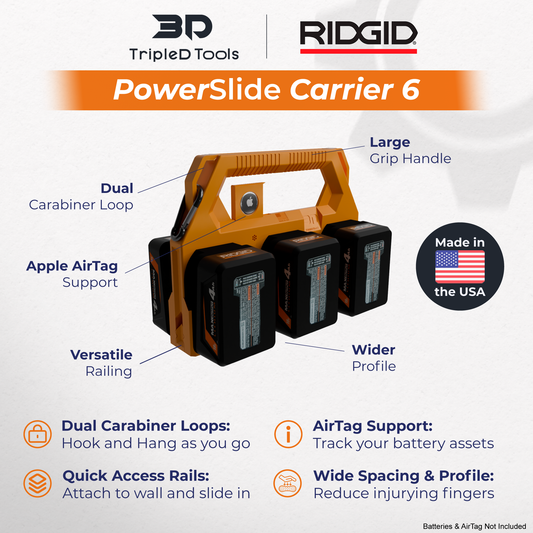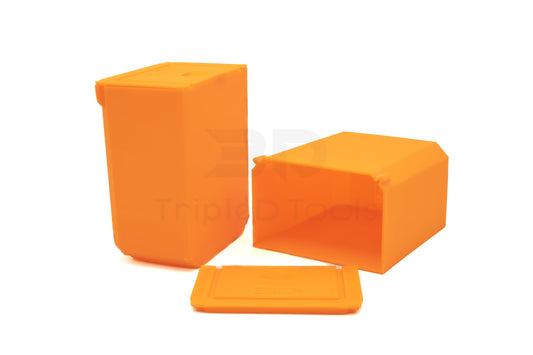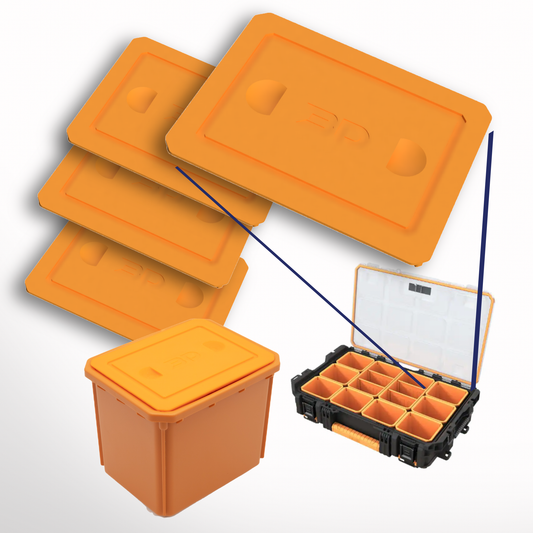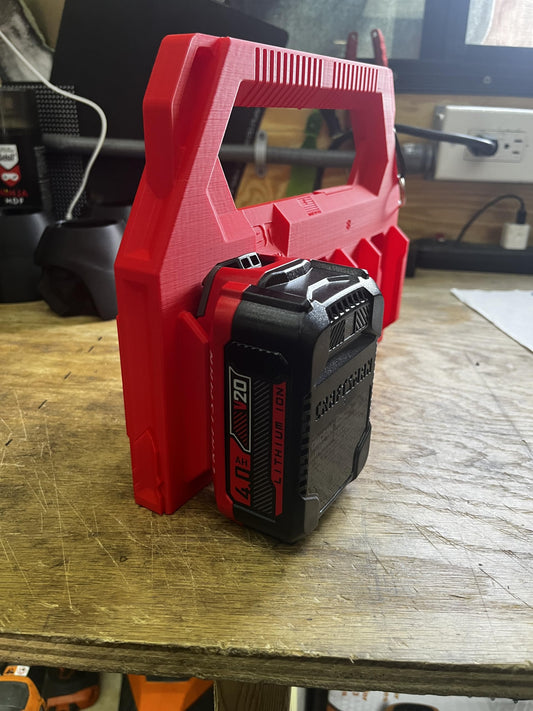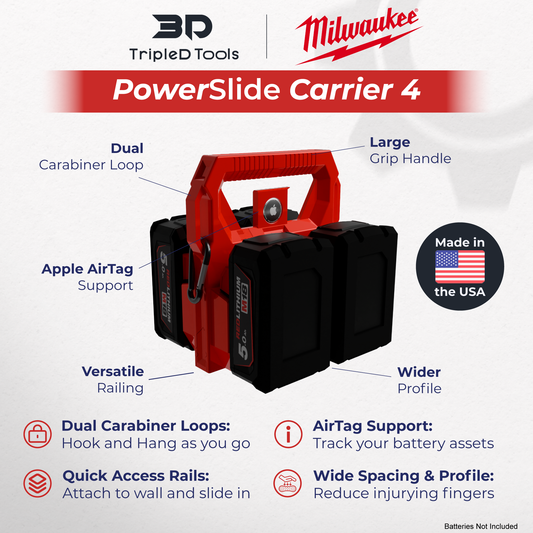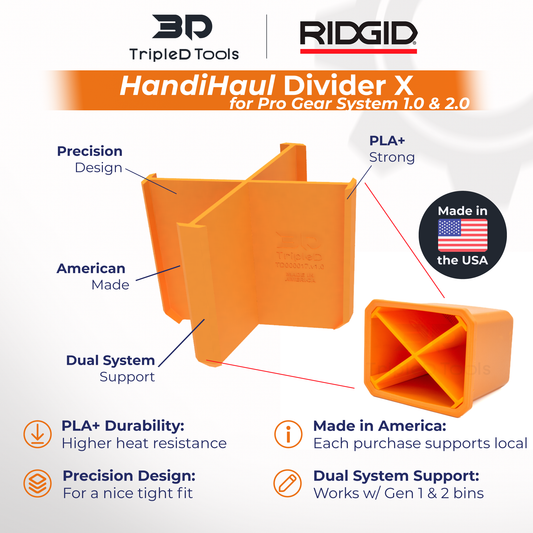

You may also like
-
Ridgid Battery Caddy PowerSlide Carrier 6 Wall Mount Battery Storage Garage Tool with Smart Tracker Support Secure Battery Holder Compatible
Regular price $44.99Regular priceUnit price / per -
TripleD Tools HandiHaul Series Pack of 2 Small Bin Inserts and Lids for Ridgid Pro Gear System Made in America (Pack of 2)
Regular price $14.49Regular priceUnit price / per -
TripleD Tools HandiHaul Small Bin Lids for Ridgid Pro Gear System Made in America (Pack of 4)
Regular price $14.99Regular priceUnit price / per -
TripleD Tools HandiHaul Labels for Ridgid Pro Gear System 2.0 Made in America Durable Plastic Customizable Pack of 2
Regular price $4.99Regular priceUnit price / per -
Crafstman Battery Caddy PowerSlide Carrier 6 w/ AirTag Tracking Support by TripleD Tools - Secure Battery Holder Made in America
Regular price $49.99Regular priceUnit price / per -
Milwaukee Battery Caddy PowerSlide Carrier 4 w/ AirTag Tracking Support by TripleD Tools - Secure Battery Holder Made in America
Regular price $41.39Regular priceUnit price / per -
TripleD Tools Precision Drywall Outlet Marker and Locator (Pack of 5)
Regular price $18.89Regular priceUnit price / per -
TripleD Tools HandiHaul Divider X Bin Dividers for Pro Gear System Bins
Regular price $9.99Regular priceUnit price / per
1
/
of
8


